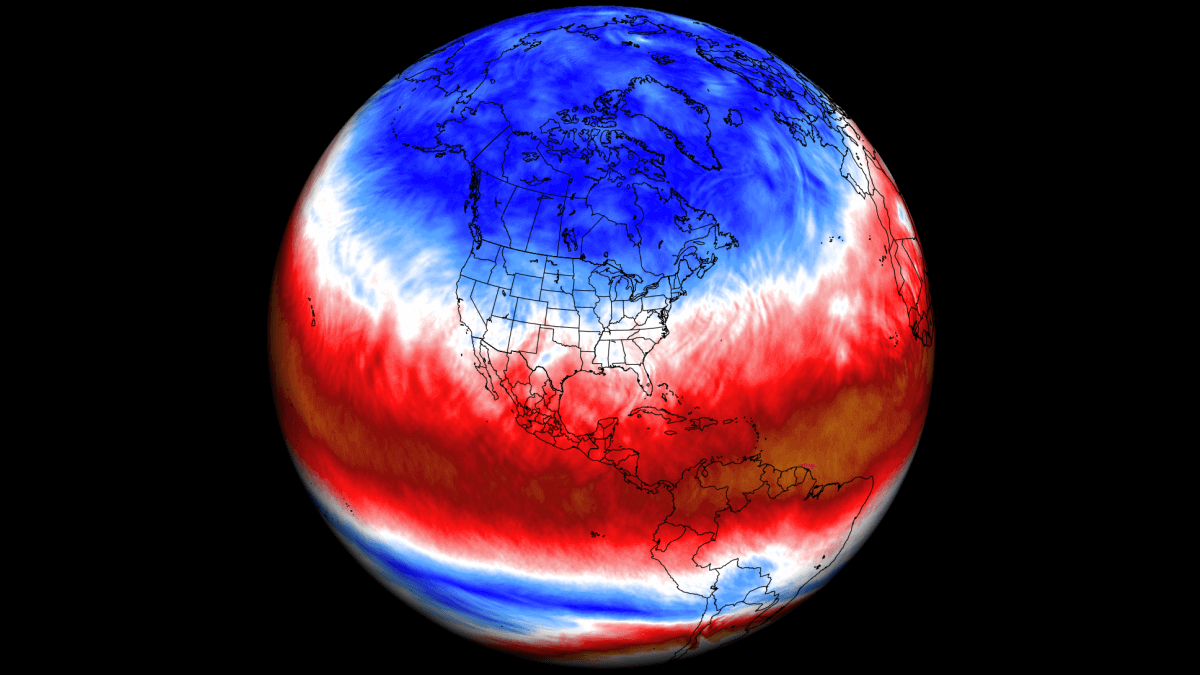A look to the Farmer's Almanac - U.S. long range 2025/2026 winter:
 www.zerohedge.com
www.zerohedge.com

For North of the 39th based on what can be seen in the south, thought it would be a certain thing, yet this is from the 'Old' Farmers Almanac:

There is also a more modern science version that looks to the influence of Quasi-Biannial Oscillation (HIGH ATMOSPHERIC WIND ANOMALY) for the U.S., Canada and Europe:

 www.severe-weather.eu
www.severe-weather.eu
Europe seems to have its own almanac form - country by country, like this for the Netherlands:
Farmer's Almanac Unveils Long-Range Forecast: "Widespread Wintry Weather" For U.S. | ZeroHedge
ZeroHedge - On a long enough timeline, the survival rate for everyone drops to zero
The Farmer's Almanac has issued its long-range forecast for the upcoming Western Hemispheric winter, calling for cold and snowy conditions across large swaths of the Lower 48. While the two-century-old publication touts an 80% accuracy rate, independent analysis places that figure around 55%.
The forecast, which dates back to 1818 and accounts for environmental fluctuations on Earth, solar activity (sunspots), the motion of the Moon, and other proprietary factors, calls for "widespread wintry weather" in the 2025–26 winter season.
Here's a breakdown of the forecast:
Cold Zones:
Snow Outlook:
- Coldest: Northern Plains to New England, plus Northwest (Idaho, Washington).
- Major cold snaps expected mid-January and mid-February.
Regional Highlights:
- New England: Frequent snowstorms.
- Atlantic Coast: Significant rain, occasional snow mix.
- Mid-Atlantic Mountains: Decent snow events.
- Great Lakes, Ohio Valley, North Central: Classic snow-heavy winter.
- Pacific Northwest Mountains: Impressive snow totals.
- Southeast: Average temps, wet;
- Appalachians see occasional snow.
- Texas/Southern Plains: Wetter than average, periodic cold snaps, limited snow but freezing rain possible.
- Southwest: Wet winter, near-average temps.

For North of the 39th based on what can be seen in the south, thought it would be a certain thing, yet this is from the 'Old' Farmers Almanac:
This winter’s forecast? Mostly wet and mild, but Canadians should still brace for snowy stretches, chilly snaps, and the occasional polar surprise.
The 2026 Long-Range Predictions for Canada
A Wet
Winter 2026 promises a season of contrasts. While much of Canada will see milder-than-average temperatures and frequent precipitation, some regions will still experience classic Canadian snowfalls and cold snaps. Here’s the big-picture outlook:
Bottom line: Even a “mild” Canadian winter brings snowy stretches and cold snaps. Layer up, plan ahead, and keep your shovel handy!
- Mild Temperatures: Winter will be milder than average across most of Canada, though southeastern Ontario may experience below-normal temperatures. Remember, “mild” is relative—plan and dress accordingly.
- A Wet Winter: Above-normal precipitation is expected from Atlantic Canada through Nunavut, southern Quebec and western Ontario, the southern Prairies, southern Yukon, and extreme southern British Columbia. Other regions should expect near- to below-normal precipitation.
- Snowfall: Above-normal snow is forecast from Atlantic Canada through northern Quebec and Nunavut, western Ontario, and the northwestern Prairies into southern Yukon.
- Mixed Weather: In areas like southern Quebec, precipitation will be above normal—but much of it may fall as rain or mixed events, keeping snow totals lower than usual.
There is also a more modern science version that looks to the influence of Quasi-Biannial Oscillation (HIGH ATMOSPHERIC WIND ANOMALY) for the U.S., Canada and Europe:

Large scale Stratospheric wind shift could trigger a Colder, Snowier Winter 2025/2026
Winter 2025/2026 may turn colder for the United States and Canada as QBO easterly winds set up conditions linked to past Polar Vortex disruptions
...The QBO is a regular variation of the winds high above the tropical Stratosphere, shifting between easterly and westerly (zonal) winds. Strong winds in the stratosphere travel in a belt around the planet at the equator. And around every 17 months, these winds completely change direction.
Below is a graph that shows the zonal wind anomalies for the past 50 years at around 24km/15mi altitude over the Equator. It nicely shows just how regularly this wind shift really is. It is like watching the heart pulse of the atmosphere, which is an often-used analogy for the QBO due to how regular it is.

The wind reversal of the Quasi-Biennial Oscillation (QBO) happens because of how atmospheric waves (energy and momentum) from the tropics interact with the stratosphere above. You could say that the QBO is a self-regulating system, but each phase interacts with the whole global weather system...
Europe seems to have its own almanac form - country by country, like this for the Netherlands:






